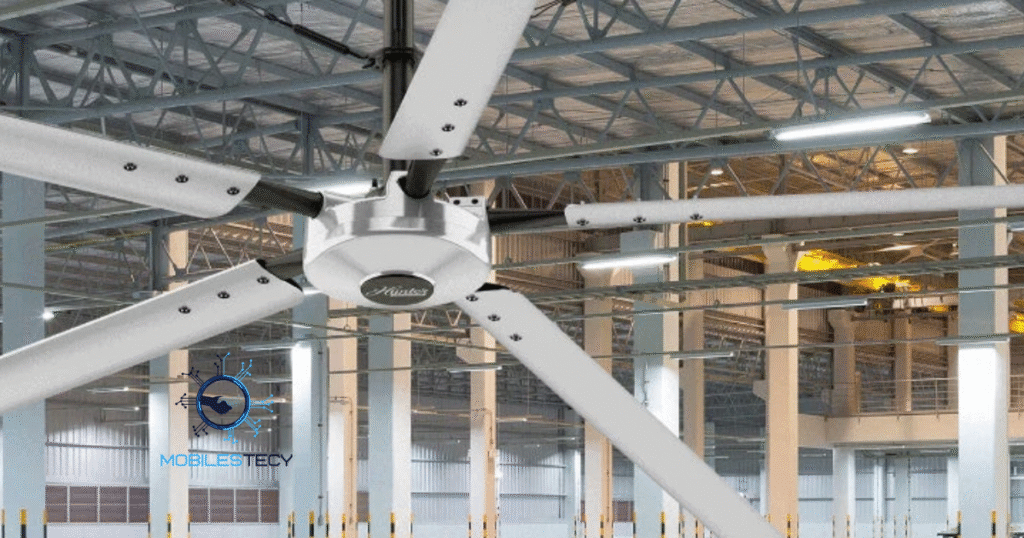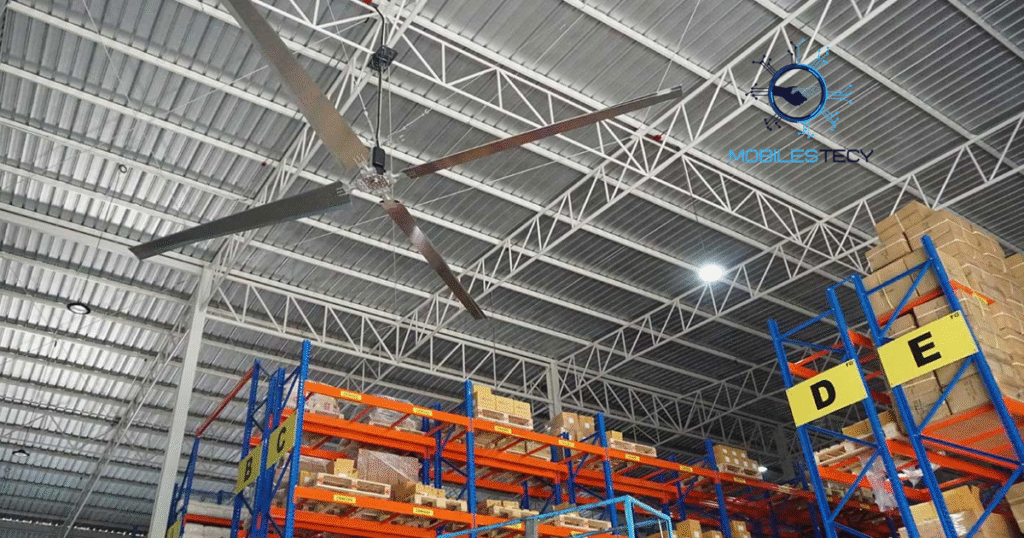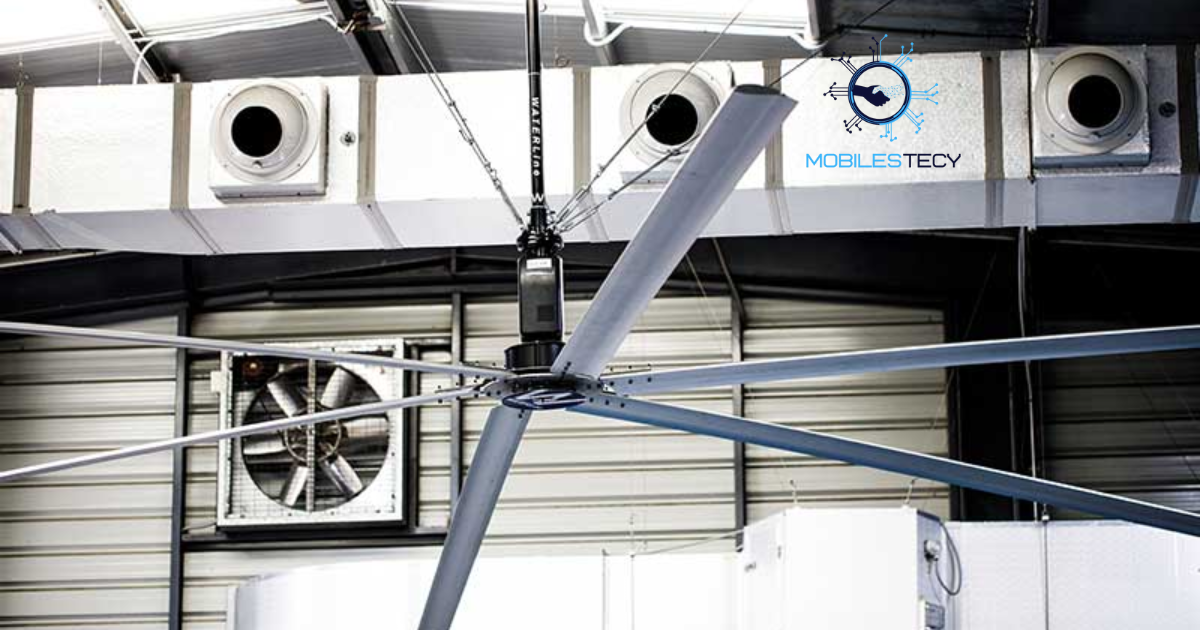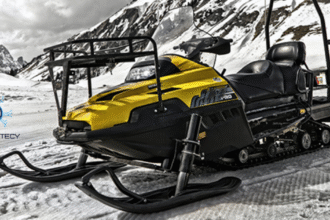High-volume low-speed (HVLS) fans are revolutionizing airflow in industrial facilities. These massive ceiling fans operate slowly yet move impressive volumes of air. Their design enhances comfort, improves ventilation, and ensures significant energy efficiency. Factories, warehouses, gyms, and barns increasingly depend on this advanced technology. The demand continues to rise as industries seek sustainable cooling solutions.
Recently, STOL technology has been integrated into HVLS fan blade designs. STOL, short for Short Take-Off and Landing, originates from aviation. It optimizes lift and airflow efficiency with minimal power and drag. When applied to fan blades, it increases coverage and reduces turbulence. This innovation enhances performance while keeping energy costs under control.
The fusion of HVLS fans and STOL principles defines modern climate solutions. It blends aerodynamics with energy efficiency to serve multiple large-scale industries. Workers experience comfort, animals gain relief, and equipment lasts much longer. Meanwhile, business owners enjoy reduced costs and sustainable building certifications compliance. This makes HVLS with STOL an innovation worth global adoption today.
Table of Contents
Understanding HVLS Fans and Their Core Benefits

High-volume low-speed fans circulate large amounts of air at low speed. Their massive blades cover wide areas, reducing temperature variations significantly indoors. These fans replace multiple smaller units, minimizing clutter and lowering costs. With fewer obstructions, airflow becomes more uniform and evenly distributed. This promotes productivity, safety, and comfort in large indoor industrial environments.
The slow speed of HVLS fans reduces energy demands compared with alternatives. Unlike air conditioners, they don’t rely heavily on refrigerants or compressors. This makes them a green alternative for warehouses, factories, and gyms. They cut operating expenses and reduce the overall building carbon footprint. Organizations benefit from improved sustainability without compromising user comfort levels.
Another benefit is improved health and safety through consistent ventilation indoors. Stagnant air can breed bacteria, mold, and respiratory health risks. By ensuring fresh airflow, HVLS fans reduce airborne contaminants effectively. Facilities like dairy farms use them to improve livestock well-being. Gyms employ them to enhance hygiene by eliminating excessive humidity.
Energy Efficiency and Cost Savings
HVLS fans with STOL blades move air effectively while consuming minimal energy. They require less power compared to traditional cooling or heating equipment. This reduction significantly lowers monthly electricity bills for large industrial facilities. Companies achieve faster returns on investment with sustainable climate control solutions.
Lower energy use also reduces strain on national power grids considerably. This contributes to environmental sustainability by reducing harmful greenhouse gas emissions. Organizations can meet green certification standards using these efficient fan systems. Ultimately, energy efficiency ensures both operational savings and long-term climate responsibility.
Role of STOL Technology in HVLS Fan Innovation

STOL technology originates from aviation where lift efficiency is critical. Short Take-Off and Landing principles reduce drag while maximizing aerodynamic stability. Engineers discovered these techniques could apply effectively to fan blade structures. When integrated, fans achieve greater airflow circulation with minimal energy requirements. The fusion provides unmatched balance between performance, coverage, and sustainability goals.
STOL blades help prevent turbulence that wastes energy during fan operation. Their angled design channels air consistently across vast indoor facilities smoothly. This ensures every corner receives balanced airflow without hot or cold spots. Reduced turbulence also extends motor and bearing life significantly over time. Ultimately, facilities experience fewer maintenance needs and longer fan operational lifespans.
Efficiency improvements also contribute to long-term financial savings for industries globally. With electricity costs rising, energy-efficient technology adoption becomes a necessity. STOL-enhanced HVLS fans lower peak energy consumption in busy facilities daily. They provide measurable returns on investment through reduced bills and downtime. This positions them as practical solutions with environmental and economic value.
Enhanced Comfort and Safety in Work Environments
STOL technology ensures even airflow without creating strong disruptive drafts. This keeps workers comfortable during long shifts in large-scale facilities. Livestock also benefit from consistent cooling, reducing stress and health risks. Comfort leads to higher productivity and improved safety across many industries.
Eliminating humidity prevents mold growth and decreases harmful bacterial spread. Warehouses maintain stored products in better condition with consistent airflow. In gyms, fresh ventilation ensures healthier air for athletes and visitors. Safety and comfort combined make HVLS fans essential across diverse environments.
Applications and Future Potential of HVLS with STOL

HVLS fans with STOL serve diverse industries requiring consistent indoor climate control. Agriculture uses them to keep livestock comfortable during seasonal heat waves. Warehouses rely on them for cooling without harming stored product quality. Sports centers adopt them to maintain comfort for both players and audiences. Their ability to adapt ensures widespread global adoption across varied sectors.
Future prospects highlight integration with IoT and smart building systems. Sensors may allow fans to automatically adjust speed and direction. This ensures optimal airflow depending on occupancy and temperature changes detected. Connectivity with AI systems could predict usage patterns for efficiency. Such advancements strengthen their role in sustainable industrial climate management.
With governments emphasizing carbon neutrality, HVLS fans gain greater recognition globally. Incentives for green technology adoption encourage industries to upgrade ventilation systems. STOL technology provides a competitive advantage in winning building compliance certifications. The combination also aligns with net-zero energy targets for industrial sectors. This ensures HVLS fans with STOL will remain indispensable for decades.
Future Integration with Smart Technology Systems
HVLS fans are increasingly being connected to IoT-based smart controls. Sensors enable automatic adjustments in fan speed according to conditions. This ensures energy use is optimized without compromising indoor comfort. Smart integration provides convenience, efficiency, and better operational cost management.
AI systems may predict airflow needs based on daily usage data. This allows facilities to optimize energy consumption during peak demand. Remote monitoring ensures managers adjust operations quickly when issues arise. Future integration guarantees adaptability as technology advances across global industries.
- HVLS fans with STOL blades maximize airflow while consuming less energy.
- Their design reduces turbulence, extending equipment life and lowering maintenance.
- Smart integration allows automatic adjustments based on occupancy and temperature.
- Industries gain sustainability advantages by reducing greenhouse gas emissions significantly.
- Cost savings ensure faster return on investment for large industrial facilities.
Faq’s
What are HVLS fans with STOL technology designed to achieve?
They provide efficient airflow coverage while maintaining very low energy consumption. Their design ensures comfort, safety, and sustainability in industrial environments.
How does STOL improve HVLS fan blade performance compared to others?
STOL reduces turbulence and drag, enhancing airflow distribution efficiently indoors. It also extends motor life and lowers operational maintenance costs.
Which industries benefit most from using HVLS fans with STOL?
Agriculture, warehouses, sports centers, and factories gain effective indoor climate control. Gyms and dairy farms also improve comfort, safety, and product quality.
Can HVLS fans with STOL integrate with smart building technology?
Yes, they connect to IoT systems and adjust automatically with sensors. AI-driven controls further optimize energy use and predict airflow demands.
Why are HVLS fans with STOL considered environmentally friendly solutions?
They consume less electricity and lower greenhouse gas emissions significantly overall. Their efficiency supports green certifications and global carbon neutrality targets.
Conclusion
HVLS fans with STOL technology mark a breakthrough in industrial climate control. By combining aerodynamics with energy efficiency, they achieve wide coverage effectively. This ensures consistent comfort for workers, livestock, and stored goods alike. Industries benefit from improved productivity, safety, and reduced environmental footprints globally. Such advantages make them essential tools in modern facility management worldwide.
The integration of STOL principles brings efficiency beyond traditional fan systems. It minimizes turbulence, reduces operational costs, and extends fan equipment lifespans. These innovations strengthen their relevance across multiple industries with diverse needs. As energy costs rise, businesses appreciate the measurable savings offered. Their ability to meet green building standards adds further long-term value.
Looking ahead, smart integration and AI-driven automation will expand possibilities. HVLS fans will become central components of sustainable, connected industrial spaces. Future advancements promise improved adaptability to climate demands worldwide. Governments, businesses, and communities will continue driving adoption rapidly. This technology represents the perfect synergy between efficiency, sustainability, and innovation.
Read more latest Articles on Mobilestecy.com








